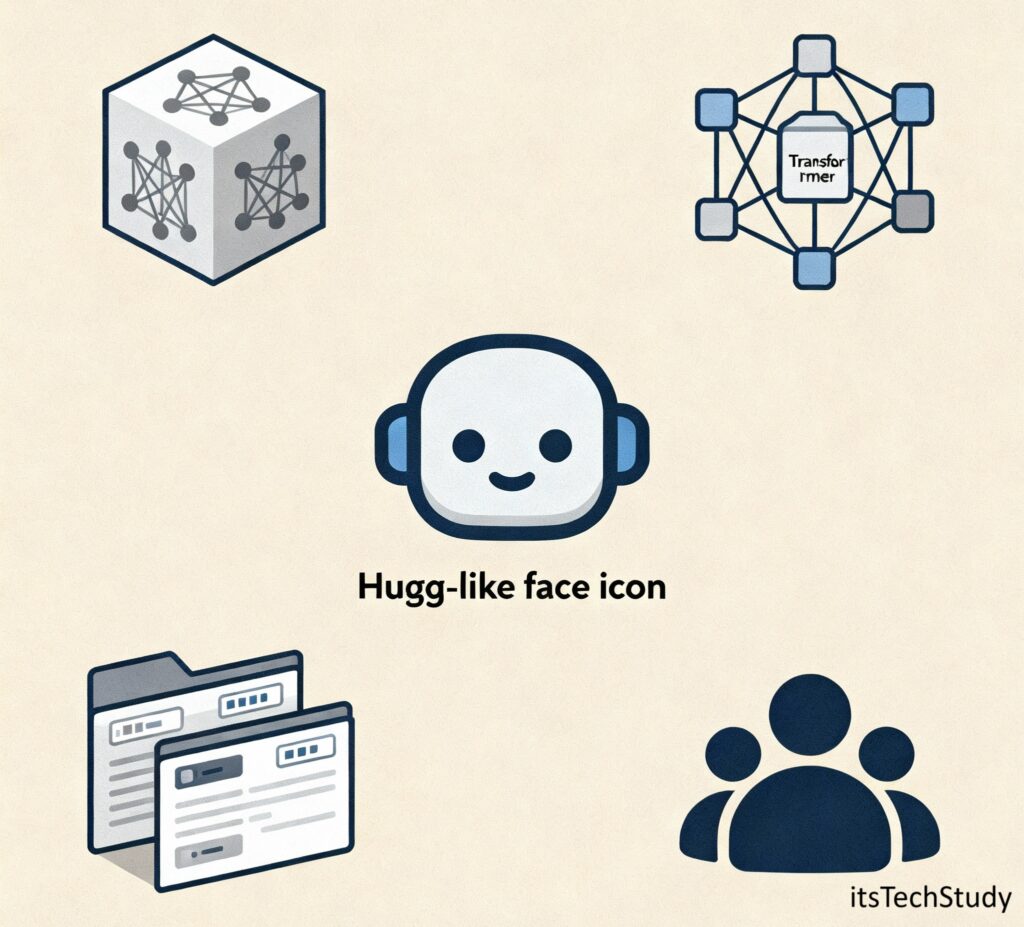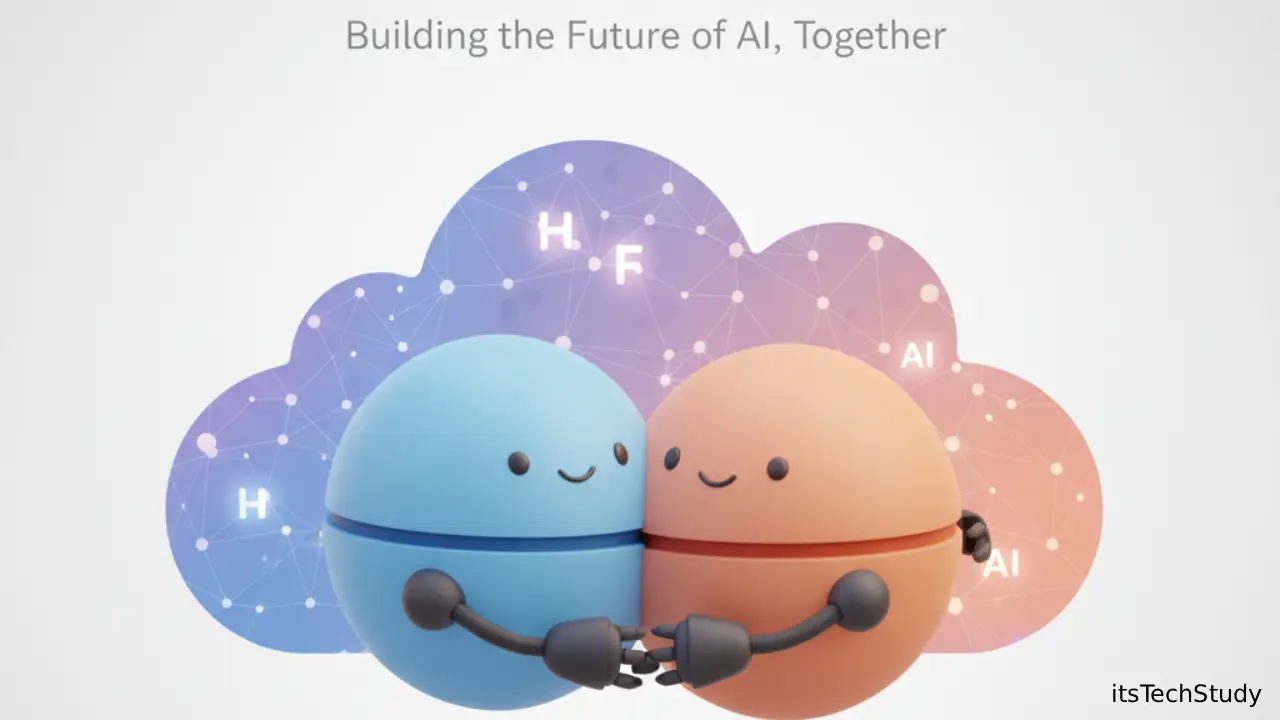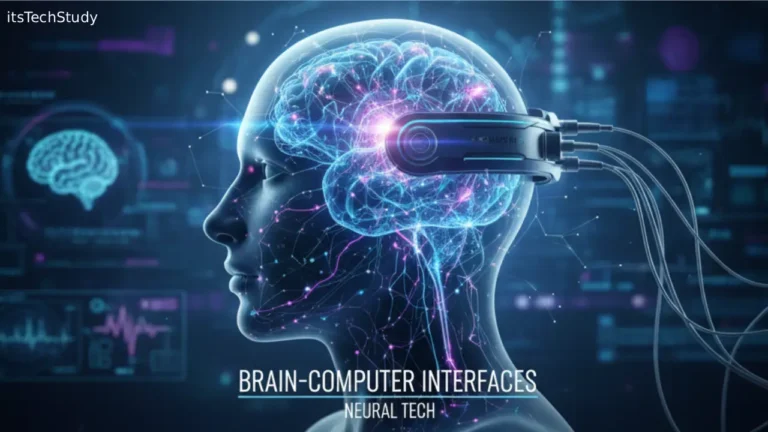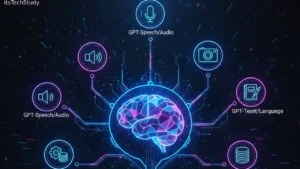Introduction: The Open Revolution in AI
In a world dominated by billion-dollar tech giants and proprietary algorithms, the name Hugging Face has emerged as a refreshing, disruptive force in artificial intelligence. What started as a chatbot company has grown into one of the most influential open-source AI platforms on the planet – empowering researchers, developers, and organizations to build, share, and improve machine learning models collaboratively.
As the demand for AI applications skyrockets across industries – from healthcare to entertainment – the challenge has been accessibility. High-quality AI models have often been locked behind corporate walls or expensive APIs. Hugging Face stepped in to change that narrative. By championing openness, transparency, and community-driven growth, it’s creating a world where innovation is no longer limited to tech giants like Google, OpenAI, or Meta.
But what exactly is Hugging Face, and why is it such a big deal in today’s AI landscape? Let’s dive deeper into how this platform is shaping the future of natural language processing (NLP), machine learning, and open AI development.
What Is Hugging Face?
At its core, Hugging Face is an open-source platform and community focused on advancing machine learning and artificial intelligence. It provides developers with access to thousands of pre-trained models, datasets, and tools for building state-of-the-art AI applications – particularly in natural language processing (NLP), computer vision, and audio.
Originally founded in 2016 as a chatbot startup, Hugging Face quickly pivoted to become the “GitHub of machine learning.” Its open platform allows users to share, train, and deploy AI models seamlessly.
Today, the Hugging Face ecosystem includes:
- Transformers Library – A powerful open-source library for NLP, CV, and audio models.
- Datasets Hub – A collaborative repository of diverse datasets for AI training.
- Model Hub – Over 500,000 models uploaded by researchers and organizations worldwide.
- Spaces – A low-code platform for deploying ML apps directly in the browser.
- Inference API – A cloud-based service to deploy models at scale with ease.
How Hugging Face Works
Hugging Face operates as an open collaborative platform. Users can upload pre-trained models or datasets, share them publicly, or fine-tune existing ones for specific applications.
Here’s how its ecosystem functions in simple terms:
- Model Creation – Developers create or fine-tune a machine learning model using frameworks like PyTorch, TensorFlow, or JAX.
- Upload and Share – The model is uploaded to the Model Hub with metadata and documentation.
- Community Collaboration – Other users can clone, test, and improve it.
- Deployment via Spaces or API – Once ready, models can be deployed instantly through Hugging Face Spaces or integrated using the Inference API.
This structure not only promotes transparency but also democratizes access to cutting-edge AI tools – something previously limited to elite research labs.
The Evolution of Hugging Face
Let’s take a look at how Hugging Face evolved from a small startup to a global AI powerhouse.
| Year | Milestone | Description |
|---|---|---|
| 2016 | Founded | Started as a chatbot company focused on emotional AI. |
| 2018 | Transformers Library Launch | Released the Hugging Face Transformers library for NLP models. |
| 2020 | Model Hub Expansion | Became the largest open repository of ML models. |
| 2021 | Introduction of Hugging Face Spaces | Launched an interactive platform for sharing AI demos and apps. |
| 2022 | Strategic Partnerships | Partnered with AWS, Microsoft, and Google for cloud integration. |
| 2023-2025 | Expansion Beyond NLP | Introduced tools for computer vision, reinforcement learning, and audio AI. |
This growth trajectory reflects a clear mission: to make AI open, collaborative, and ethical.
Key Features of Hugging Face
1. Transformers Library
One of Hugging Face’s biggest achievements, the Transformers library, provides thousands of pre-trained models for:
- Text classification
- Question answering
- Sentiment analysis
- Translation
- Image classification
- Speech recognition
It supports frameworks like PyTorch, TensorFlow, and JAX, making it a developer favorite.
2. Model Hub
Think of it as GitHub for AI models – a central repository where anyone can upload and share machine learning models. Each model page includes:
- Source code
- Usage examples
- License information
- Community discussions
3. Datasets Hub
This hub simplifies access to public datasets, supporting over 15,000+ datasets. Users can find data for NLP, vision, and multimodal tasks.
4. Spaces
A no-code/low-code platform that allows anyone to build and showcase AI demos using Gradio or Streamlit. Perfect for sharing projects or prototypes without needing backend infrastructure.
5. Inference API
For those who need scalable deployment, the Inference API lets businesses integrate AI models directly into their applications with minimal setup.
Why Hugging Face Stands Out
In a crowded AI ecosystem, Hugging Face distinguishes itself through its philosophy as much as its technology.
- Open Source First – Every major tool is open-source and community-driven.
- Transparency – Clear licensing, explainable models, and ethical AI initiatives.
- Interoperability – Supports all major ML frameworks.
- Community Collaboration – Over 100,000 contributors and millions of monthly users.
These values foster a sense of trust and inclusivity rarely seen in the AI industry.
Hugging Face vs. Other AI Platforms
| Feature | Hugging Face | OpenAI | Google AI | Anthropic |
|---|---|---|---|---|
| Model Access | Open-source | Limited | Proprietary | Limited |
| Community Collaboration | Strong | Minimal | Moderate | Low |
| Cost | Free with paid options | Mostly paid | Free/Paid | Paid |
| Deployment Options | Spaces & API | API only | Cloud-based | API only |
| Transparency | High | Medium | Low | Medium |
Verdict:
While OpenAI and Google AI are known for high performance and commercial use, Hugging Face leads in openness, community collaboration, and flexibility – crucial for research and innovation.
Pros and Cons of Using Hugging Face
Pros
- Completely open-source and transparent.
- Massive library of pre-trained models.
- Active global community for support and collaboration.
- Supports multiple ML frameworks.
- Easy deployment with Spaces and API.
- Ethical AI initiatives and responsible use guidelines.
Cons
- Requires some technical knowledge for customization.
- Free tier has limited inference speed.
- Model performance may vary based on community contributions.
- Some advanced enterprise features are paid.
Real-World Applications of Hugging Face
- Chatbots and Virtual Assistants – NLP models from Hugging Face power advanced conversational systems.
- Healthcare AI – Used for medical transcription, symptom analysis, and research insights.
- Finance – For sentiment analysis and fraud detection.
- Content Creation – AI writers, summarizers, and translators use Hugging Face models.
- Education – Language learning and automated grading tools.
- Media and Entertainment – Generative models for lyrics, scripts, or character dialogues.
Its flexibility means startups, enterprises, and researchers can all benefit – regardless of budget or scale.
Community and Collaboration
One of Hugging Face’s strongest pillars is its vibrant community. Unlike closed ecosystems, it encourages:
- Peer reviews of models.
- Open discussions on ethical AI.
- Collaborative dataset curation.
- Shared learning through Hugging Face forums and GitHub.
The company even launched the BigScience Project, an open research initiative that led to BLOOM – one of the largest open multilingual language models.

Ethical AI and Responsible Development
AI’s rapid growth has sparked global debates about ethics, bias, and misuse. Hugging Face takes these concerns seriously.
It promotes:
- Transparent model cards explaining each model’s intended use and limitations.
- Datasheets for datasets ensuring accountability.
- Ethical AI research in partnership with academic institutions.
This commitment helps prevent the misuse of AI technologies and builds trust among users.
How to Get Started with Hugging Face
Step-by-Step Guide:
- Sign Up: Create a free account on huggingface.co.
- Explore Models: Visit the Model Hub to find pre-trained models.
- Install Transformers Library:
pip install transformers - Load a Model:
from transformers import pipeline generator = pipeline("text-generation", model="gpt2") print(generator("AI will revolutionize", max_length=30)) - Deploy Your Model:
Use Hugging Face Spaces or Inference API to share your AI with the world.
It’s that simple — from idea to deployment in minutes.
The Future of Hugging Face and Open AI
Looking ahead, Hugging Face aims to become the central hub for all AI collaboration. With advancements in multimodal AI, federated learning, and ethical governance, the platform is setting new standards for transparency and inclusivity.
As more governments and institutions push for open AI standards, Hugging Face’s approach aligns perfectly with the global call for accessible and responsible innovation.
In short – it’s not just shaping technology; it’s shaping the future of how technology is built.
Conclusion: The Future Belongs to Open AI
Hugging Face has proven that innovation thrives when technology is shared, not siloed. Its open-source ecosystem has lowered the barriers to entry, making AI development more democratic and ethical.
As artificial intelligence continues to evolve, Hugging Face represents a hopeful alternative – one where collaboration, transparency, and humanity drive progress, not competition or secrecy.
Whether you’re a developer, researcher, or simply curious about AI, Hugging Face is more than a platform – it’s a movement toward a smarter, fairer, and more open future.
Frequently Asked Questions (FAQ)
Q1: What makes Hugging Face different from OpenAI?
Ans: Hugging Face is open-source and community-driven, while OpenAI primarily offers proprietary models like GPT through paid APIs.
Q2: Is Hugging Face free to use?
Ans: Yes, most tools and models are free. However, enterprise users can choose paid plans for higher API limits and faster inference.
Q3: Do I need to be a programmer to use Hugging Face?
Ans: Not necessarily. Platforms like Spaces let you deploy AI demos without deep coding knowledge, making it beginner-friendly.
Q4: Can Hugging Face models run offline?
Ans: Yes, once downloaded, models can run locally without an internet connection, ideal for privacy-focused applications.
Q5: What programming languages are supported?
Ans: Hugging Face primarily supports Python, but integrations for JavaScript, Rust, and C++ are growing.
Q6: Is Hugging Face suitable for businesses?
Ans: Absolutely. From startups to Fortune 500 companies, Hugging Face offers flexible deployment and scalable API solutions.












Comments (1)
[…] the use of large language models has become even more widespread. With open-source frameworks like Hugging Face, OpenAI’s GPT series, Anthropic’s Claude, and Google’s Gemini models pushing the limits, […]
Leave a Comment